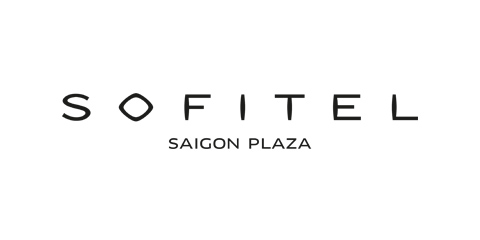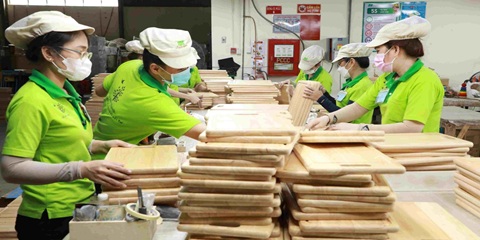Want to be in the loop?
subscribe to
our notification
Business News
VIETNAMESE TEXTILE STOCKS FAILING TO WOO INVESTORS
In June 2017 the Việt Nam National textile and Garment Group (Vinatex) listed on UPCoM under the ticker VGT at VNĐ13,500. After remaining steady for more than six months, the price of VGT shares suddenly soared by 70 per cent to VNĐ19,400 last January. But it soon gave up all its gains and plunged to VNĐ11,000.
A similar fate has befallen many other textile and apparel companies too.
Việt Tiến Garment Corporation (VGG) was for a long time trading at the highest price in the industry. But it has also been on a downward trend for the last three months.
VGG is now being traded at around VNĐ49,200, down by 20 per cent from January.
The price of Phong Phú Corporation (PPH) fell to VNĐ20,000 and has remained there since listing on UpCoM last August with a reference price of VNĐ25,000.
This is a paradoxical situation since most textile companies are doing pretty well on the business front.
An analysis by Đầu Tư Chứng Khoán newspaper found that only one of the 20 largest listed companies reported a loss in the first quarter of this year. Most of the rest achieved high growth rates.
The Việt Nam Textile and Apparel Group is a typical example: It achieved an estimated profit of VNĐ178.4 billion (US$7.85 million), up 41 per cent year-on-year.
Many of them even achieved 100 per cent growth, including Nhà Bè Garment Corporation, (204 per cent) and Hà Nội Textile and Garment Corporation(Hanosimex, 181 per cent).
So why this paradox?
Some market observers thought this was simply because investors are now obsessed with banking and real estate stocks to the exclusion of all else.
Others said textile shares are not fancied because of the industry’s low profit margins.
Besides, they are facing huge competition from cheap imports from China, the Philippines and Bangladesh.
While Việt Nam’s accession to the CPTPP will indeed offer a huge advantage to domestic players, they need to meet many conditions for that. One of them is that textile and garment producers must prove the origin of all the materials used to make a product. Not many Vietnamese textile companies can do this.
Constant increases in input costs and the need to embrace technology 4.0 to reduce them are other issues.
However, experts still expect textile and garment companies to grow solidly because globally the industry is expected to grow at a whopping 25 per cent a year from now through 2025.
This also makes the Việt Nam Textile and Garment Association believe that the export target of US$35 billion this year is well within reach.
Banks likely to plead for hike in credit growth cap, again
Many banks will have to seek the State Bank of Việt Nam’s permission to lend further since they have almost used up their full-year lending quotas within just five months.
A spokesperson for a major bank based in HCM City said his bank had been allowed 14 per cent credit growth but has already achieved nearly 10 per cent.
Some banks have even used up their entire quota already, like Viet A Bank, Nam Á Bank, AB Bank, and Eximbank.
The SBV said as of June 1 overall credit growth was 5.6 per cent.
This has been attributed to the fact that many banks were worried about the possibility of negative credit growth like last year and so stepped up their lending activities.
Besides, many banks have been licensed by the SBV to open more branches and transaction offices this year while their credit growth quotas were allocated before that.
Many banks have said they would find it difficult to do business if they are not allowed to lend further this year.
This situation is not new and has in fact happened often in the past.
According a report from the State Audit Office, last year many banks, including Vietinbank, BIDV, Vietcombank, Agribank, SeABank, and HDBank, ended up with credit growth rates that exceeded the levels set by the SBV.
They had to seek permission to continue lending after hitting the limit.
But the SBV refused to permit certain lenders to exceed the limit.
Some people have questioned the need for the central bank to control credit activities through quotas for banks.
This began in 2012 when many banks reported credit growth of up to 50 per cent, causing a spurt subsequently in non-performing loans (NPLs).
The central bank began to allocate quotas based on banks’ health and performance.
It has divided banks into four groups for allocating credit growth quotas: Group 1 (healthy banks), Group 2 (average banks), Group 3 (below-average banks), and Group 4 (weak banks).
Those in Group 4 might not be allocated quotas at all.
It has become evident that this system is going a long way in ensuring the safety of the overall banking system.
But many experts feel it is now time for the central bank to scrap the credit quota policy since the monetary market has finally stabilised after many years of volatility.
Besides, liquidity in the banking industry is high and the Government has adopted tough measures to clean up NPLs and stop cross-ownership of banks, they say.
Many banks themselves are now cautious about lending since they are well aware of the consequences, including the NPLs they are likely to be burdened with in case of reckless credit growth.
The experts say that in this changed scenario the central bank should stop using administrative measures to intervene, and instead allow the market to determine.
They further said that authorities now have a handy tool to closely and effectively control banks’credit activities: capital adequacy ratio (CAR).
CAR is an international standard that measures a bank’s risk of insolvency from excessive losses. Currently, the minimum acceptable ratio is 8 per cent. Maintaining an acceptable CAR protects banks’ depositors and the financial system as a whole.
Source: VNS
Related News

A STELLAR CHRISTMAS AT SOFITEL SAIGON PLAZA
Experience the magic of year-end celebrations in five-star luxury, where Parisian elegance meets Saigon’s festive vibrancy. Discover your Stellar Christmas moments: https://sofitel-saigon-plaza.com/festive-offer-2025

CONSTRUCTION SECTOR POSTS OVER 9% GROWTH IN 2025
Industries under the ministry’s management accounted for an estimated 17.23% of national gross domestic product (GDP), up about 0.17 percentage point from 2024. They contributed around 1.96 percentage points to overall GDP growth, reported the Vietnam News Agency. The contribution helped push Vietnam’s economic growth to above 8% in 2025 and supports the Government’s aim of pursuing double-digit growth in the coming years.

VIETNAM PUTS PUBLIC INVESTMENT DISBURSEMENTS AT VND603.6 TRILLION
Vietnam’s public investment disbursements had amounted to VND603.6 trillion in the year to December 18, equivalent to 66.1% of the plan assigned by the prime minister. According to the Ministry of Finance, actual disbursements by December 11 had totaled VND577.7 trillion, or 63.3% of the prime minister-approved plan of VND913.2 trillion, the Vietnam News Agency reported.

SHINE INTO 2026 AT HOIANA RESORT & GOLF!
This New Year’s Eve, celebrate where the sea meets the sky. Vibrant performances, festive dining, DJ beats, live bands and dazzling fireworks come together for one unforgettable night. From beachfront countdown moments to curated New Year’s Eve dinners across Hoiana, every detail is designed to welcome 2026 in style.

VIETNAM’S TRADE SET TO SURPASS US$900 BILLION FOR FIRST TIME
Vietnam’s total import-export turnover is expected to reach about US$920 billion by the end of the year, marking the first time the country’s trade value has exceeded the US$900-billion mark. As of December 15, Vietnam’s total trade turnover stood at US$883.7 billion, according to the Agency of Foreign Trade under the Ministry of Industry and Trade.

GLOBAL SOURCING FAIR VIETNAM 2026 – THE TRULY GLOBAL B2B SOURCING SHOW IN VIETNAM TO EXPAND & DIVERSIFY YOUR EXPORT MARKETS WORLDWIDE
The 4th edition of Global Sourcing Fair Vietnam returns in 2026 with an impressive scale, featuring 700 booths showcasing Fashion & Accessories, Home & Gifts, and the newly introduced Printing & Packaging Products from 500+ verified suppliers across Vietnam and Asia – including Mainland China, Taiwan, Hong Kong SAR, South Korea, India, Bangladesh, ASEAN, and more.
























